In the decade I’ve been keeping bees, the only neighbor complaint I’ve heard was when the folks next door had a pool and found “my” bees floating in the water.
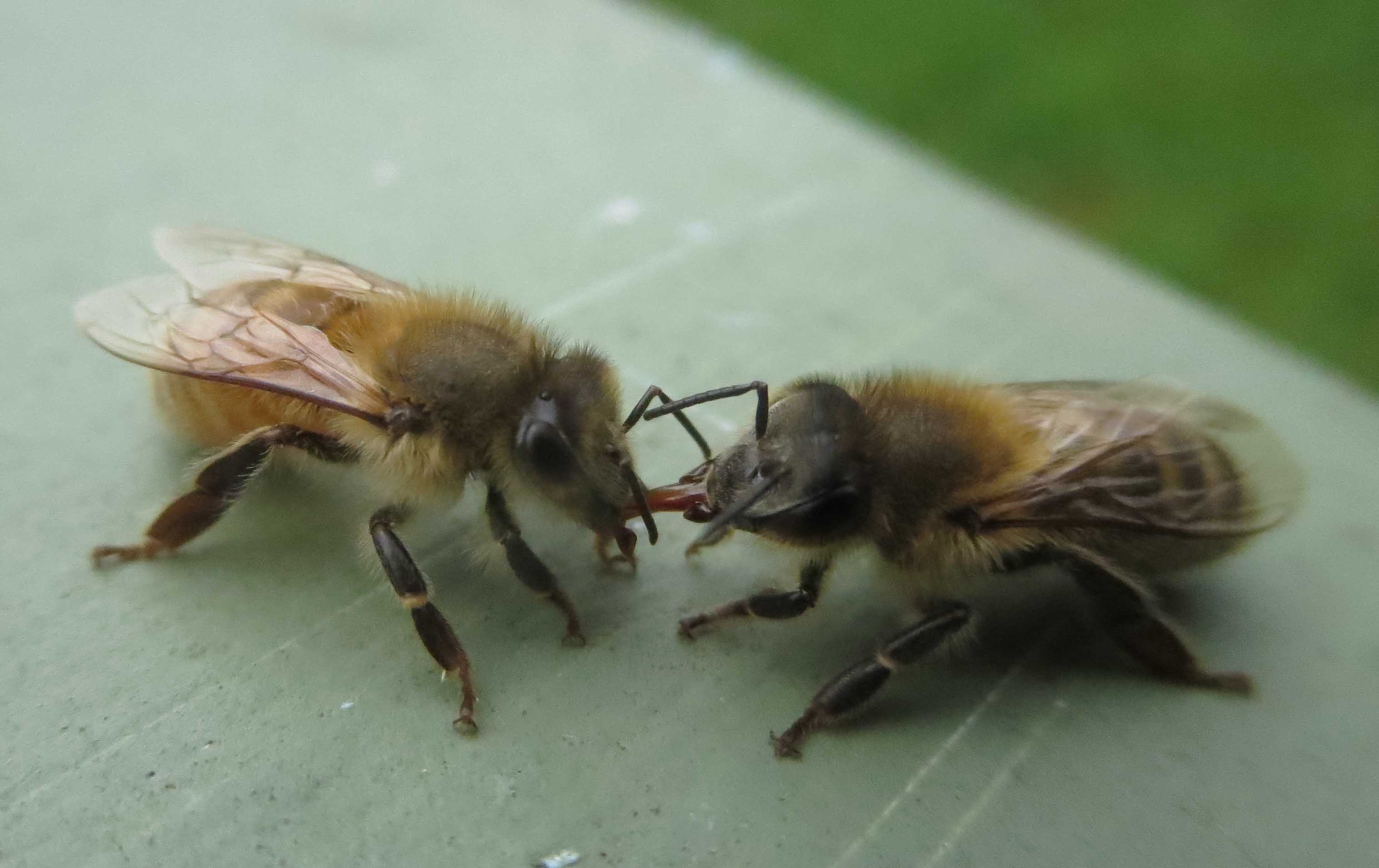 Honeybees require water for the same reasons we do: to keep their tissues and organs in operating condition, to remove wastes from their body, and to regulate temperature. This last item is particularly fascinating when you look at the entire colony as a sort of “super organism” with individual bees as “cells” within the “body” of the colony. The foragers bring water back to the hive and transfer that water to the house bees. The house bees then distribute the water where it is most needed. On hot summer days, it is most needed to keep the baby bees, the “brood,” from overheating.
Honeybees require water for the same reasons we do: to keep their tissues and organs in operating condition, to remove wastes from their body, and to regulate temperature. This last item is particularly fascinating when you look at the entire colony as a sort of “super organism” with individual bees as “cells” within the “body” of the colony. The foragers bring water back to the hive and transfer that water to the house bees. The house bees then distribute the water where it is most needed. On hot summer days, it is most needed to keep the baby bees, the “brood,” from overheating.
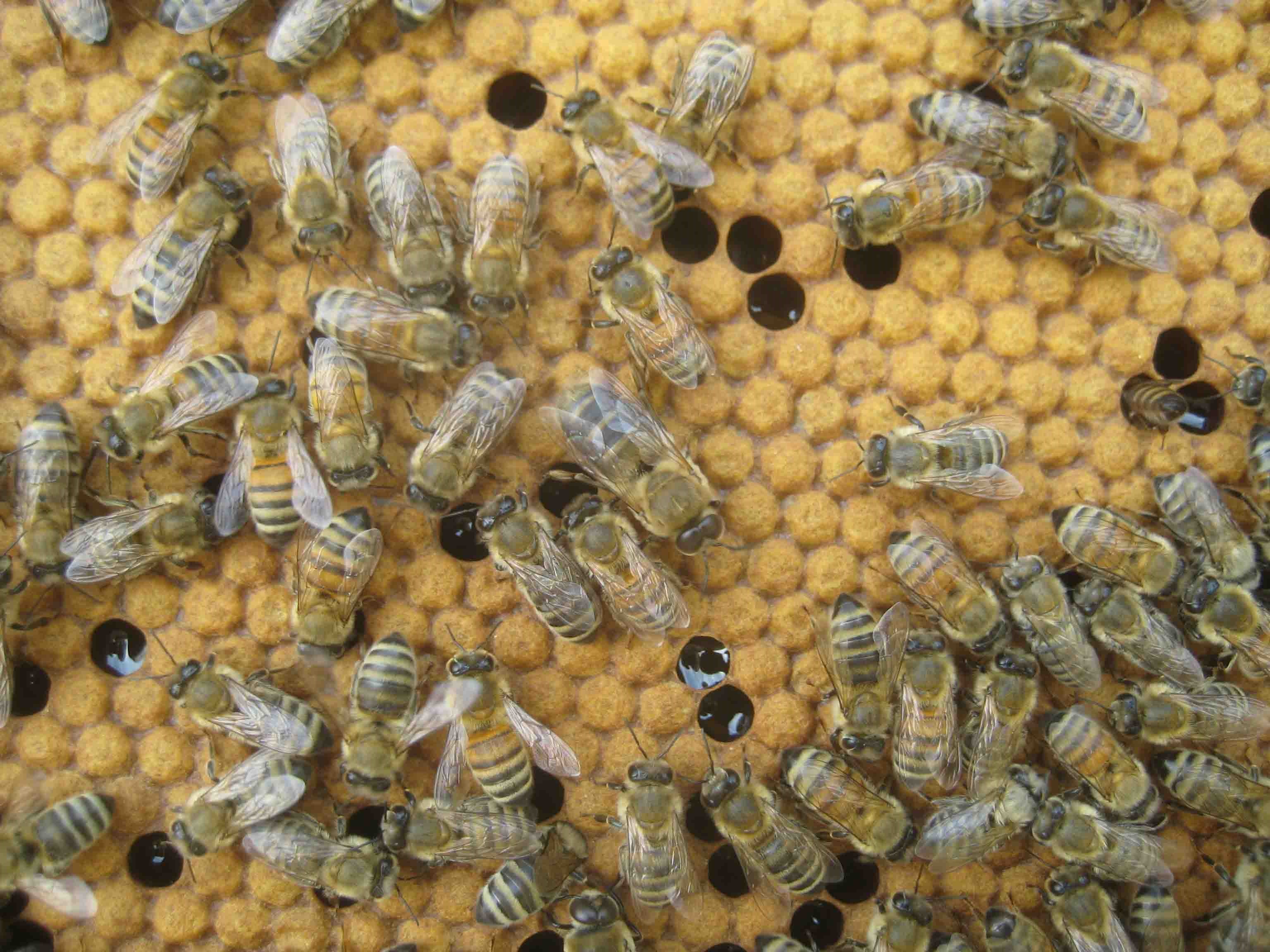 When weather causes the inside the hive to be warmer than 95-degrees F, house bees may spread a thin film of water over the surface of the cells containing the baby bees. Other bees are hard at work fanning, beating their little wings while holding firm inside the hive. Fanning causes a current of air to pass over the cells. The water evaporates into the moving air, which helps to cool the hive. This is similar to how we sweat to keep ourselves cool.
When weather causes the inside the hive to be warmer than 95-degrees F, house bees may spread a thin film of water over the surface of the cells containing the baby bees. Other bees are hard at work fanning, beating their little wings while holding firm inside the hive. Fanning causes a current of air to pass over the cells. The water evaporates into the moving air, which helps to cool the hive. This is similar to how we sweat to keep ourselves cool.
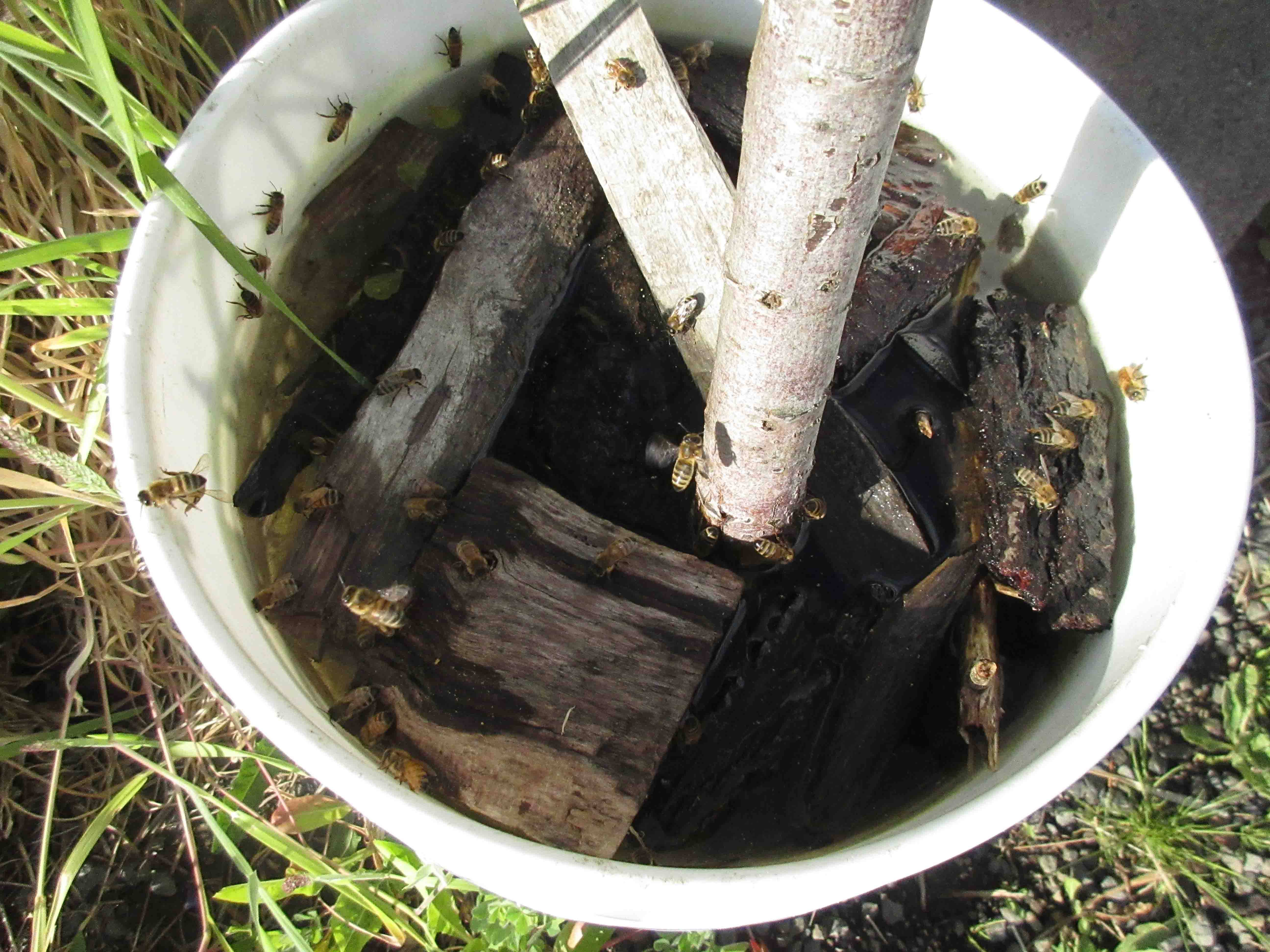 Honeybees collect water year-round, but are most active at water sources in late spring and summer. To discourage your bees from visiting your neighbor’s pool, provide your own sources of water. The bees prefer water that has some flavor to it, by way of minerals or organic material. You can make your water sources more tasty by adding a small mineral block or water-loving plants in the container.
Honeybees collect water year-round, but are most active at water sources in late spring and summer. To discourage your bees from visiting your neighbor’s pool, provide your own sources of water. The bees prefer water that has some flavor to it, by way of minerals or organic material. You can make your water sources more tasty by adding a small mineral block or water-loving plants in the container.
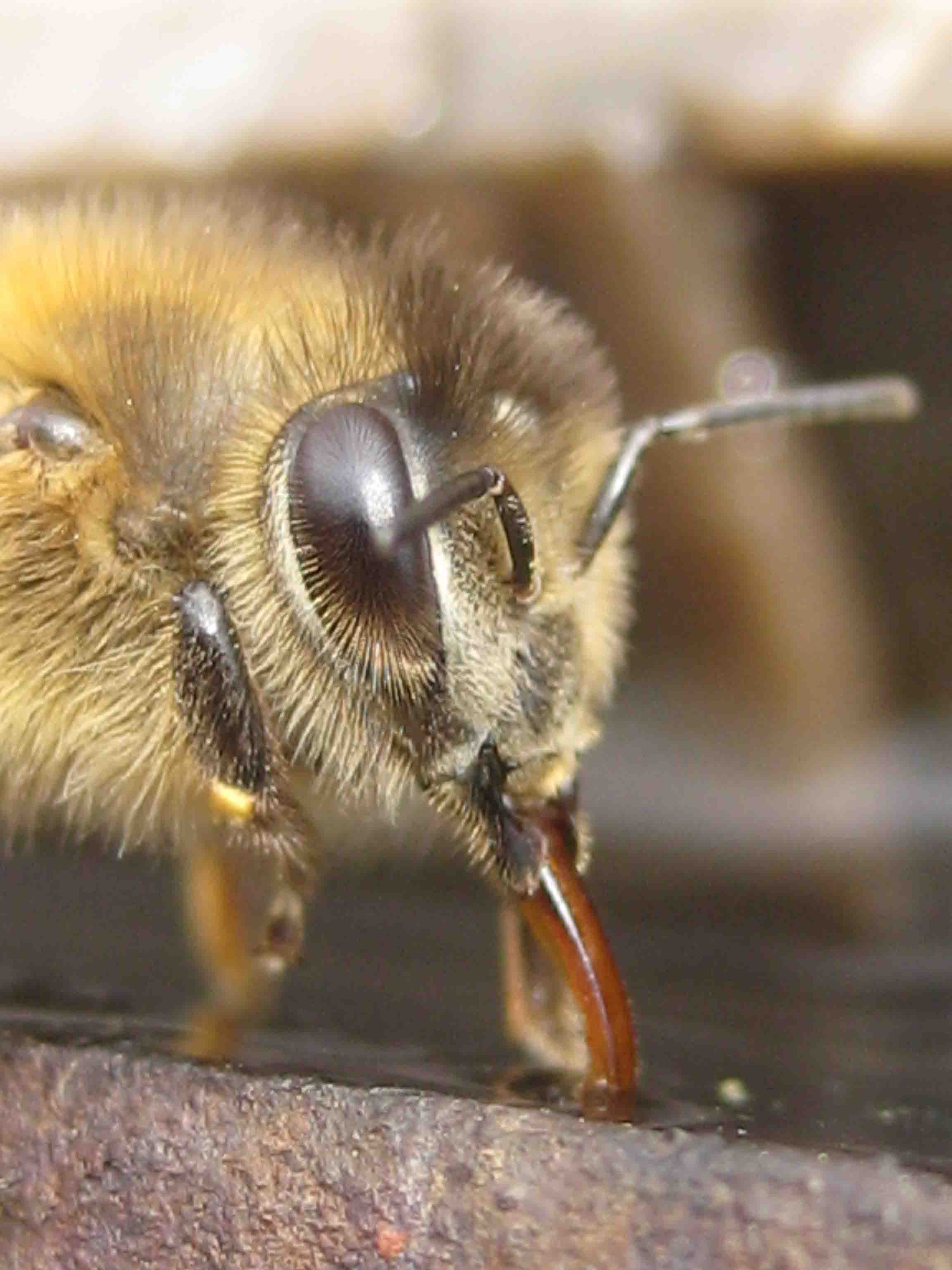 When providing a source of water for your bees, avoid open pools as new foragers are unfamiliar with water and often try to land on its surface. Here are a few ideas for making safe places for bees to water up:
When providing a source of water for your bees, avoid open pools as new foragers are unfamiliar with water and often try to land on its surface. Here are a few ideas for making safe places for bees to water up:
• A 5-gallon bucket full of water with a layer of corks or a round piece of board with holes cut it in floating on the top. (See “Watering Bees” on YouTube for a demonstration of this idea.)
• A 5-gallon bucket full of water planted with cattails.
• A birdbath filled with gravel or sand and then topped off with water.
• A tray of wet moss.
From my experience, the 5-gallon buckets are the most sustainable method for watering your bees. During the hottest part of summer I can leave a bucket out for a couple of weeks without worrying about it drying up. Birdbaths and other shallow containers are more aesthetically pleasing but require more frequent re-filling. I use the tray of moss method in the winter and early spring – it provides a safe place for the bees to gather water and the rainfall during those months keep the moss nice and moist.
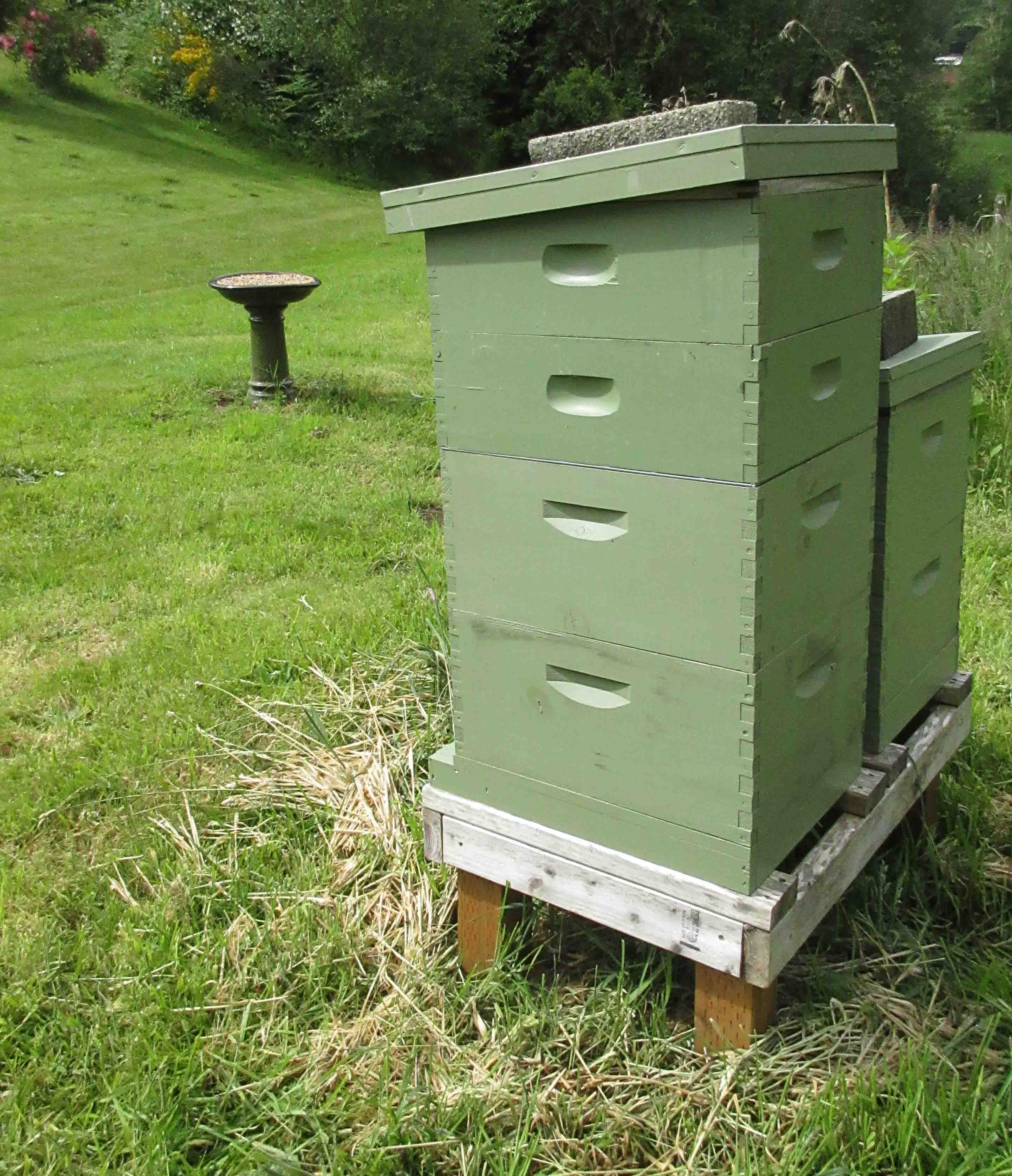 I also find that bees seem to ignore water sources that are near the hive. The closest I’ve seen them foraging for water is about 50-feet away and out of sight of the hive’s entrance. In fact, it can be raining, with pools of water collecting on their front porches, and the foragers will still go to their favorite bucket 100-feet away to gather water for the hive.
I also find that bees seem to ignore water sources that are near the hive. The closest I’ve seen them foraging for water is about 50-feet away and out of sight of the hive’s entrance. In fact, it can be raining, with pools of water collecting on their front porches, and the foragers will still go to their favorite bucket 100-feet away to gather water for the hive.
I have yet to find a sure-fire solution to keep bees from foraging from the neighbors’ water sources. Even though I have a pond, two buckets, and numerous shallow containers, I still find an occasional honeybee in the neighbor dog’s water dish and see bees sucking dew drops off the lawn. Ultimately, I choose to share honey with my neighbors. This smooths relations and keeps them happy to live next door to a beekeeper, despite the occasional bee in the pool.
I’d love to hear your tips or tricks for keeping bees out of your neighbor’s pool! Please share in the comments below: